Do you sometimes feel like you’re on a hamster wheel – busy throughout the day but making little progress? This has happened to me too, and statistics prove we aren’t alone. Research shows that workers are productive for only about 3 hours during an 8-hour workday.
My journey spans several years of experimenting with different productivity habits and strategies. Through countless attempts, I found that there was a simple truth – productivity isn’t about working harder. Success comes from working smarter with effective systems.
Here’s the best part – you won’t need a complete lifestyle change or expensive tools to boost your output. Simple strategic changes can dramatically improve your work and life quality. This realization led me to compile these 10 proven habits that have helped me and thousands of others accomplish more while staying stress-free.
These practical techniques will help you stay productive at work and home. You won’t find complex theories or impossible routines here – just straightforward strategies you can implement today.
Practice Deep Work Sessions
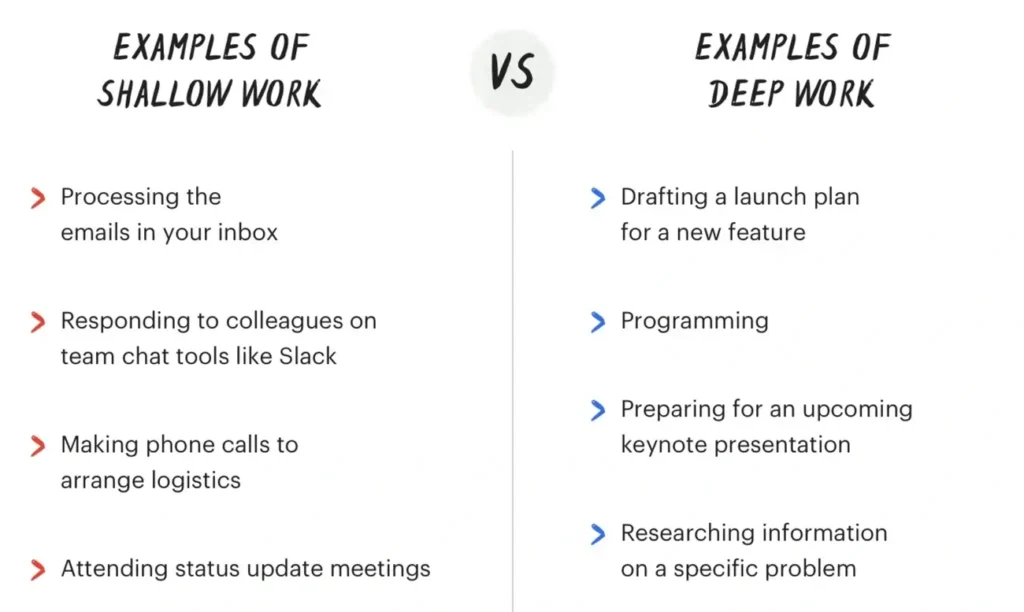
My productivity skyrocketed when I found that deep work is the most powerful habit anyone can develop. Let me share the lessons I learned about this game-changing approach to getting more done.
What is Deep Work
Deep work puts you in a state of distraction-free concentration that challenges your cognitive limits. Think of it as your mind’s equivalent of a high-intensity workout. You become fully immersed in solving complex problems, writing, or creating something meaningful. Cal Newport defines it as professional activity performed with focused concentration that creates new value and improves your skills.
Deep Work Benefits
Deep work has become a superpower in today’s economy, and I’ve seen this firsthand. These benefits stand out from my experience:
- Accelerated learning of complex skills
- Higher quality work output
- Increased sense of fulfillment and meaning
- Better engagement with work tasks
- Improved creative thinking capabilities
How to Implement Deep Work
My proven approach to implementing deep work comes from extensive research and personal experience:
- Start Small: Your focused sessions should not exceed 90 minutes. Studies show our concentration intensity drops beyond this timeframe.
- Create Your Environment: A distraction-free workspace makes a vital difference. This means:
- Putting your phone away completely
- Closing unnecessary browser tabs
- Finding a quiet space without interruptions
The human brain can’t sustain more than four hours of deep work daily. I block out my most important deep work sessions during peak energy hours. Research shows that workers are typically interrupted every 11 minutes and need about 25 minutes to resume their tasks. This is why I tell my team about my deep work schedule and set clear boundaries.
Building this habit works like any other skill that needs practice. You wouldn’t run a marathon without training, so don’t expect hours of deep focus immediately. Short sessions help build your “focus muscle” gradually.
Master the 80/20 Rule
The 80/20 Rule completely changed my outlook on work when I first learned about it. This principle has changed how I approach my work and manage my time.
Understanding the Pareto Principle
The 80/20 Rule, also known as the Pareto Principle, shows an interesting pattern: roughly 80% of our results come from 20% of our efforts. Italian economist Vilfredo Pareto first noticed that 20% of the population owned 80% of the wealth in Italy. This principle applies to work and life of all types.
Identifying High-Effect Tasks
My own experience shows that finding these high-effect tasks needs careful review. Here’s what I’ve learned about spotting that vital 20%:
- Look for tasks that create bottlenecks for others
- Identify activities that directly contribute to main goals
- Focus on work that gets measurable results
To name just one example, in project management, 80% of project value comes from just 20% of the original effort. This knowledge helps me set better priorities.
Applying 80/20 to Daily Work
A practical system helps me use this principle in my daily routine. I start by listing all tasks for the day. Then I pick the ones that will create the most effect. The vital few tasks matter more than the trivial many in improving my output.
My workday revolves around tasks that yield maximum results. Take team project management – I focus on the 20% of tasks that drive most results. Other tasks still matter, but strategic priorities come first.
This principle teaches us that small tasks can sometimes make the biggest difference. It helps me review each task’s effect rather than just its size.
Note that the 80/20 rule isn’t a strict formula – it simply shows how effort relates to outcome. This viewpoint frees you to work smarter on things that truly count.
Break Tasks Into Smaller Chunks
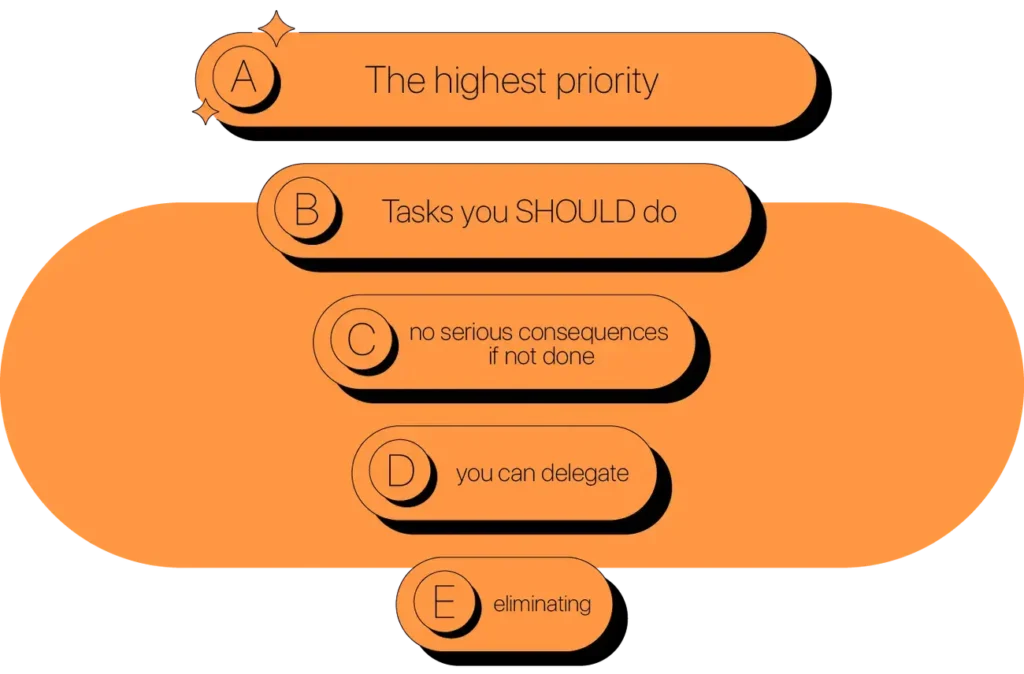
Breaking down intimidating tasks into manageable pieces is the real secret to staying productive on large projects, not working longer hours. This simple approach has reshaped how I handle my work.
Task Breakdown Techniques
Breaking down tasks goes beyond creating a to-do list – it makes work easier to digest. Studies show that shorter tasks (30-90 minutes) work better than tackling projects that stretch over weeks or months.
My tested process to break down tasks looks like this:
- Start with a brain dump of all components
- Group related items together
- Create self-contained units of work
- Estimate time requirements
- Prioritize based on dependencies
Setting Micro Goals
Micro-goals can affect us psychologically in powerful ways. Breaking down larger tasks gives us several benefits:
- Less overwhelm and stress
- Better focus and clarity
- More momentum from regular wins
- Better ways to track progress
- More consistent execution
Small goals that take less than 10 minutes to finish work best. This builds what I call “activation energy” – the momentum you need to tackle bigger challenges.
Progress Tracking Methods
Task tracking works much better when work is properly chunked. Teams that use detailed task breakdown methods show steady progress in their Agile process.
My binary approach to progress tracking makes tasks either complete or incomplete. This removes the confusion of percentage-based updates and shows real progress clearly.
Milestone-based tracking helps me monitor key events and completion points in complex projects. This method works great because it lets me see both individual task completion and overall project progress at once.
These techniques have boosted my productivity and focus. Large tasks now look like sets of achievable mini-goals that I can tackle one at a time.
Implement Time Blocking
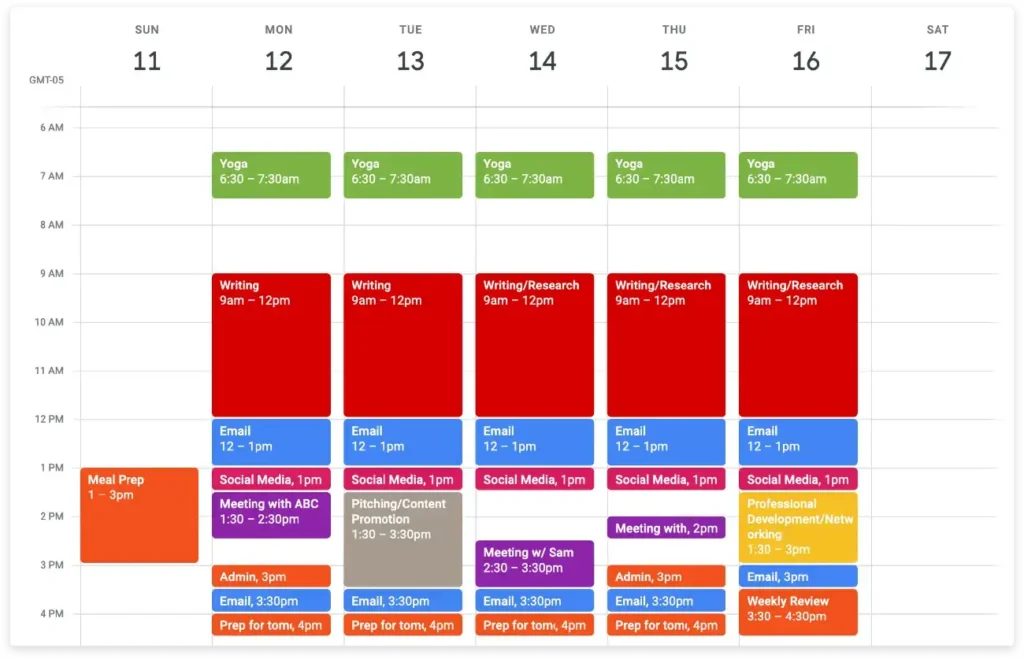
My experiments with different productivity techniques led me to time blocking – it’s now my secret weapon to maximize daily output. This quick method turned my scattered hours into focused achievement blocks.
Time Blocking Fundamentals
Time blocking goes beyond a fancy to-do list. The strategy lets you divide your day into dedicated chunks of time for specific tasks. I found that there was several benefits to this approach:
- It helps you stay focused and cuts down distractions
- You get a clear structure for the day
- Your time management skills get better
- Task prioritization becomes easier
- The overall work output improves
Time blocking works so well because it makes you face your priorities and be intentional about your limited time.
Creating Time Blocks
My trial and error led to a practical approach that works for implementing time blocks:
- Identify Priority Tasks: List your weekly tasks and prioritize them using the Eisenhower Matrix
- Schedule Work Blocks: Give specific time slots to each task, with important work early in the day
- Include Buffer Time: Leave some space between blocks for unexpected things
- Balance the Schedule: Make room for breaks and personal activities
- Review and Adjust: Look at your day’s progress and tweak future blocks as needed
Time Blocking Tools
A simple calendar works to start with, but dedicated tools are a great way to get more from time blocking. Modern apps come with automated scheduling, calendar integration, and task syncing features. Here are some options I love:
Digital Solutions: Tools like Motion and Morgen give you AI-powered scheduling and work with multiple calendars. These platforms keep you flexible while making sure you stick to your plans.
Traditional Tools: Standard calendar apps or paper planners work well if you prefer simplicity. Just stay consistent with whatever system you pick.
Time blocking isn’t about following a rigid schedule – it creates intentional spaces for focused work. The real power comes from knowing how to control even unpredictable schedules better.
Eliminate Digital Distractions
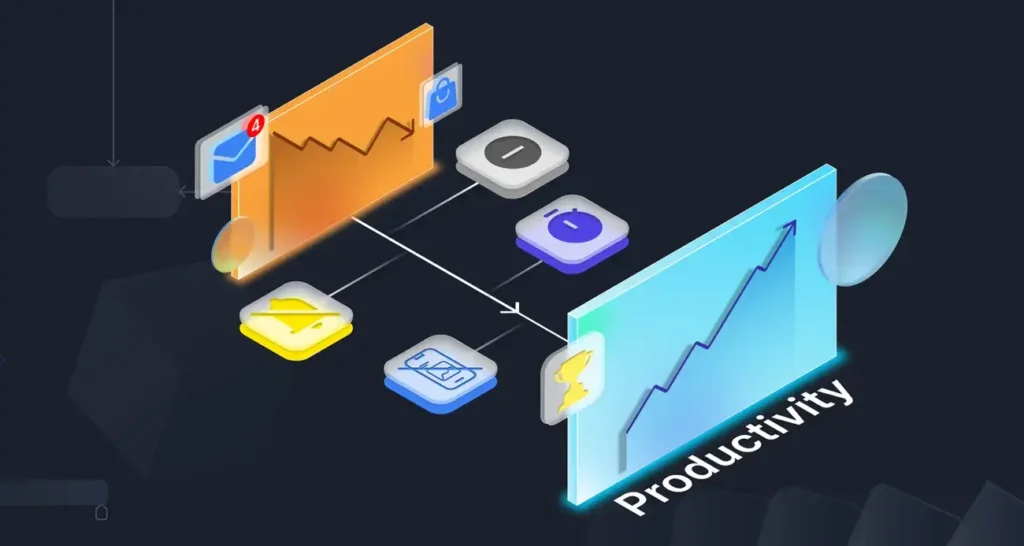
The digital world brings both advantages and drawbacks to productivity. My experience as a productivity coach shows how technology can either enhance or destroy our efficiency. Let me tell you what I’ve discovered about beating digital distractions to boost productivity.
Common Digital Distractions
The numbers paint a stark picture – we spend more than three hours per day dealing with emails and communications. The situation becomes worse when interruptions hit because it takes 23 minutes to get back into the flow. These are the biggest productivity destroyers I’ve found:
- Email and instant messages (3+ hours daily)
- Social media (approximately 2 hours daily)
- Phone usage (42 minutes of personal tasks during work)
- App switching (toggling between 5-10 apps every hour)
Distraction-Free Setup
My systematic approach helps create a distraction-free environment. Research proves that just seeing your phone nearby can break your concentration. These strategies work best for me:
- Place phone in another room during work sessions
- Use airplane mode during deep focus periods
- Block specific times to batch-check emails
- Create designated “notification-free” zones
Focus Apps and Tools
My extensive testing revealed several powerful tools that help maintain focus. The secret lies in finding apps that make concentration feel natural instead of forced. Here are my top picks:
| Cold Turkey | Website/app blocking with customizable schedules |
| Freedom | Complete internet blocking for set periods |
| RescueTime | Time tracking and productivity insights |
| Forest | Gamified focus sessions |
Use the Two-Minute Rule
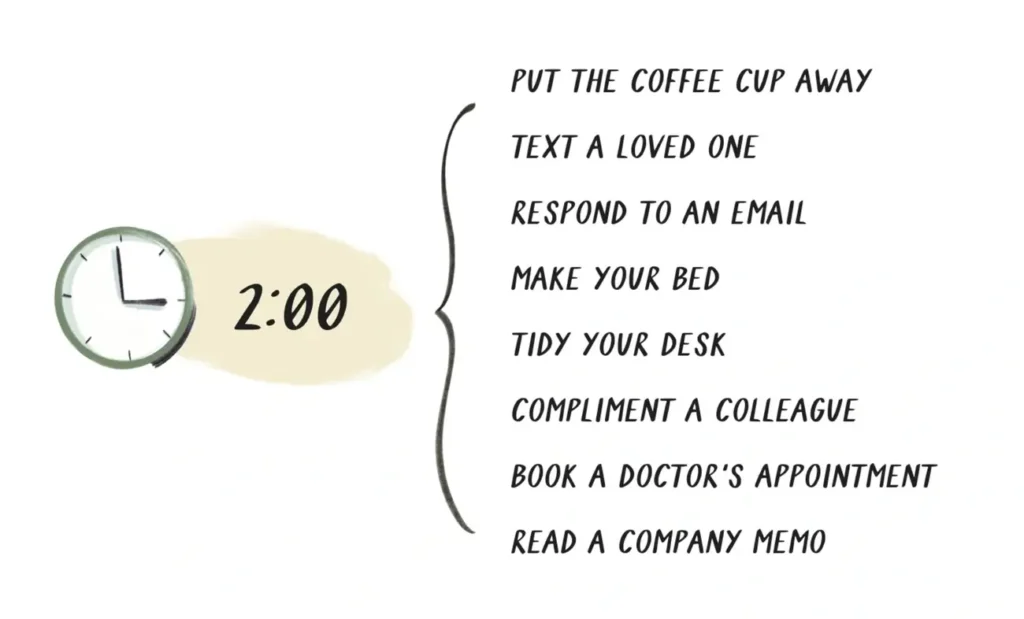
Small actions can make a huge difference in our productivity. I found that there was a simple technique called the Two-Minute Rule that can totally change how we work.
Two-Minute Rule Explained
David Allen first shared this idea in his productivity method. The rule says you should do any task right away if it takes less than two minutes to finish. This works really well, especially when you have lots of small tasks that can clutter your mind and slow you down.
Quick Task Management
After using this rule, I’ve spotted several tasks that fit perfectly in the two-minute timeframe:
- Responding to important emails
- Filing documents
- Making quick phone calls
- Scheduling appointments
- Tidying your workspace
The rule works because storing and tracking these tiny tasks actually takes more time than just doing them right away. Finishing these quick tasks immediately stops them from becoming mental baggage that drains your energy all day.
Building Momentum
The Two-Minute Rule really shines because it creates momentum. Our brain sees these small wins as successes and that builds energy for bigger tasks. This “bias for action” helps beat procrastination and boosts overall productivity.
This rule teaches our minds to act quickly. By sticking to this principle, I’ve developed what I call a “completion mindset.” Small tasks don’t pile up anymore because I quickly decide if something needs immediate action.
It’s worth mentioning that you should use the Two-Minute Rule strategically during processing time, not randomly throughout your day. This keeps the rule from becoming a way to avoid more important work.
The Two-Minute Rule works even better when combined with other productivity techniques we’ve talked about. You can use it to clear small tasks during breaks between deep work sessions.
Practice Regular Brain Dumps
My productivity changed when I found the practice of regular brain dumps. This simple technique helps me clear mental clutter. It keeps my focus sharp on what matters most.
Brain Dump Benefits
Regular practice has made me more productive and mentally clear. Research shows brain dumping reduces mental fatigue and motivates people to face challenges. Here’s what I noticed:
Better mental clarity and focus
Less stress
Sharp memory and recall
More creativity and problem-solving skills
Smarter decisions
Brain Dump Process
Brain dumping takes just 2-5 minutes with my simple approach. Let your thoughts flow without judgment. Here’s what works for me:
Choose Your Medium: Pick paper or digital format
Set a Timer: Keep sessions between 2-5 minutes
Write Freely: Put everything down without filters
Take a Break: Step back for a moment
Review and Categorize: Sort your thoughts
Research shows people fall asleep faster if they write their to-do lists before bed. This helps me stay productive at work and home.
Organization Systems
Different methods showed me that organizing brain dump content makes it work better. The Eisenhower Matrix helps me sort tasks by priority.
My brain dumps focus on three areas:
- Urgent Actions: Things I need to do now
- Project Ideas: Thoughts that need more work
- Future Planning: Goals for later
Moving tasks to one central system works best. This creates a single task list and removes the mess of scattered notes. My productivity stays high throughout the day.
Pro Tip: Brain dumping works better when paired with daily habits. To cite an instance, I do a quick brain dump with my morning coffee. This sets me up for a productive day.
Take Strategic Breaks
Science has changed my perspective on breaks. They’re not just downtime but a vital productivity tool. Studies show that the most productive people work for 52 minutes and then take a 17-minute break. This proves that well-planned breaks are needed to maintain high performance.
Optimal Break Timing
Our bodies naturally follow an energy cycle. The best performers take breaks for about 20-25% of their workday. My experiments led me to two approaches that work well:
- The 52/17 Method: 52 minutes of focused work followed by 17 minutes of rest
- The 90-Minute Cycle: 90 minutes of work with a 20-minute break
Productive Break Activities
Some breaks work better than others. The most energizing breaks include activities that differ from our work tasks. These break activities boost productivity:
- Physical Movement
- Quick walks (shown to boost concentration by 20%)
- Simple stretching exercises
- Standing and moving around
- Mental Recharge
- Meditation or deep breathing
- Looking out a window
- Brief power naps (10-20 minutes)
Energy Management
Regular practice taught me that good breaks help manage energy, not just time. Research shows better memory and focus come from taking breaks before exhaustion hits. These principles guide my approach:
- Listen to Body Signals: Yawning or poor concentration means it’s time for a break
- Avoid Digital Distractions: My breaks are screen-free
- Use Strategic Timing: Challenging tasks align with my high-energy periods
- Practice Active Recovery: Short, planned breaks work better than pushing through fatigue
Smart break activities make the difference. Studies show employees who take regular breaks have better productivity, mental health, and job satisfaction. My productivity improved when I started seeing breaks as a tool for success rather than weakness.
Set Daily MIT (Most Important Task)
My years of testing different productivity methods have shown that picking your Most Important Tasks (MITs) is the life-blood of real progress. Studies show that people who focus on 2-3 critical tasks daily get a lot more done than those who try to do everything at once.
MIT Selection Process
Picking the right MITs needs a clear plan. These key factors help me choose my daily MITs:
- How they affect long-term goals
- Urgency and deadlines
- Task complexity
- Stakeholder value
- How they fit strategic goals
Research shows people who pick their MITs early in the morning are 30% more likely to achieve their goals. My peak morning hours go to these vital tasks because this timing gives me the best chance of success.
MIT Prioritization
Here’s my well-laid-out way to rank tasks. This is how I review what matters most:
| High Priority | Direct goal impact | 60-90 minutes |
| Medium Priority | Supporting tasks | 30-60 minutes |
| Low Priority | Routine work | Under 30 minutes |
MIT Completion Strategies
My three-step process helps me complete my MITs successfully:
- Morning Power Hour: The toughest MIT comes first when my energy peaks.
- Progress Tracking: A simple yes/no system keeps me accountable and removes any confusion.
- Strategic Reviews: Each evening, I check what I finished and plan tomorrow’s priorities. This keeps me moving toward bigger goals steadily.
This approach turns overwhelming to-do lists into clear action plans. Focusing on just 2-3 key tasks daily lets me finish 15 important objectives in a typical work week. This targeted method has changed how I stay productive and get meaningful results.
Create Evening Planning Rituals
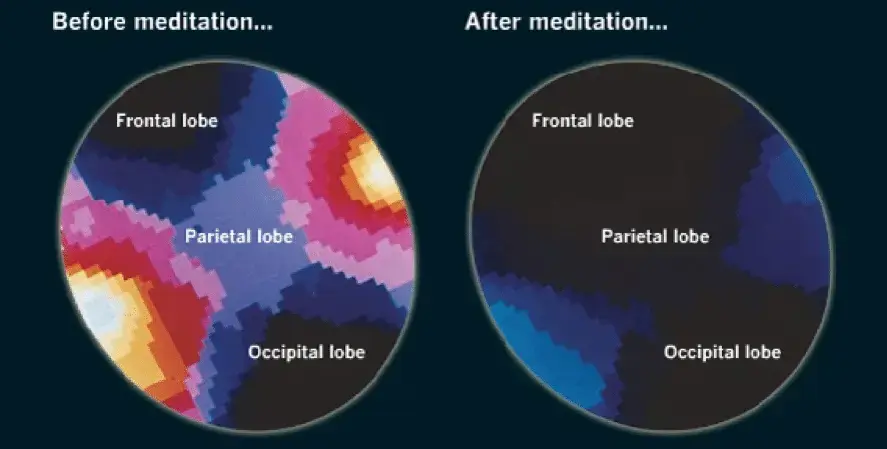
After testing countless productivity systems, I found that a productive day starts the night before. A solid evening planning ritual has become the life-blood of my consistent productivity.
Evening Review Process
My evening review takes just 20 minutes and boosts my effectiveness the next day. I use a well-laid-out approach that has:
- Task completion assessment
- Progress tracking on key projects
- Identifying roadblocks and solutions
- Energy level evaluation
- Notable achievements documentation
This process helps me stay clear-headed and reduces stress. Studies show that having a healthy evening routine helps refresh us and with good reason too – it leads to better sleep and energizes us for tomorrow.
Next Day Planning
Experience shows that planning the night before is especially powerful because your mind stays fresh and focused on work. My planning system groups tasks into specific categories:
| Essential Tasks | Top priority work | 30-60 mins |
| Scheduled Events | Time-bound commitments | As needed |
| Growth Zone | Personal development | 30 mins |
| Management Tasks | Administrative work | 45 mins |
Success Measurement
Regular tracking has shown me that productivity measurement works on many levels. My evening review focuses on three key metrics:
- Task Completion Rate: Comparing planned versus completed tasks
- Energy Management: Tracking peak productivity periods
- Goal Alignment: Making sure daily actions support longer-term objectives
Tracking progress helps me stay committed to specific goals effectively. I can spot areas to improve efficiency by comparing my time usage with accomplishments.
This evening ritual works so well because it’s flexible. The system adapts to different scenarios – late work nights, early meetings, or focus time for personal projects. This flexibility helps the ritual stay productive whatever life throws at me.
Comparison Table
| Practice Deep Work Sessions | Faster learning, better output quality, more fulfillment | 1. Begin with small steps 2. Set up a quiet workspace 3. Define clear limits | 90-minute sessions, max 4 hours/day | Quiet workspace, no phone, closed browser tabs | Time spent focused without breaks |
| Become skilled at the 80/20 Rule | Smart priorities, best results with less work | 1. Write down tasks 2. Spot high-value activities 3. Zero in on what matters most | Not specified | Task analysis, results review | Results vs effort ratio |
| Break Tasks Into Smaller Chunks | Less stress, better focus, steady progress | 1. List all parts 2. Sort items 3. Make standalone units 4. Set time estimates 5. Order by importance | 30-90 minutes per chunk | Progress tracking, milestone checks | Tasks finished on time |
| Use Time Blocking | Better focus, clear plan, smarter time use | 1. Pick priority tasks 2. Block work time 3. Add buffer time 4. Keep schedule balanced 5. Check and tweak | Daily planning slots | Motion, Morgen, calendar apps | Sticking to schedule |
| Cut Digital Distractions | Sharper focus, fewer interruptions | 1. Disable notifications 2. Create quiet zones 3. Check emails in batches | 23 minutes to refocus after breaks | Cold Turkey, Freedom, RescueTime, Forest | Distraction-free time |
| Apply the Two-Minute Rule | Fewer pending tasks, clearer mind | 1. Spot quick wins 2. Do it now if under 2 minutes 3. Use during task sorting | 2 minutes or less per task | Quick task checker | Small tasks done daily |
| Do Regular Brain Dumps | Clear thinking, less stress, better recall | 1. Pick your tool 2. Time yourself 3. Write without filters 4. Rest 5. Sort and group | 2-5 minutes per session | Paper/digital tools, Eisenhower Matrix | Mental clarity gains |
| Take Smart Breaks | Better focus, steady energy | 1. Use 52/17 or 90/20 method 2. Do energizing activities 3. Stay off screens | 17-20 minutes per break | Movement, meditation, quick naps | Energy and focus levels |
| Pick Daily MITs | Hit goals faster, stay on track | 1. Check task list 2. Pick 2-3 key items 3. Do during peak hours | 60-90 minutes for priorities | Morning power hour, progress logs | Daily priorities met |
| Plan Your Evening | Ready for tomorrow, less stress | 1. Check finished tasks 2. Note progress 3. Plan tomorrow 4. Log wins | 20 minutes | Task sorting system, planning guide | Task completion, energy levels |
Conclusion
These 10 productivity habits have turned my daily work routine from chaos to control. Years of testing and fine-tuning have taught me that productivity doesn’t need complex systems or expensive tools – just steady practice of proven techniques.
My experience proves that starting small brings the best outcomes. Select one or two habits that strike a chord with your current challenges. Deep work sessions could help if you struggle to focus, and the two-minute rule might solve your task buildup issues.
Becoming more productive takes time. These habits work best when you adapt them to your workflow and schedule. Add them one at a time, see how they affect your work, and adjust accordingly.
The true strength comes from merging these habits into your customized productivity system. Time blocking combined with MIT selection builds structure, while strategic breaks and evening planning help maintain steady progress. These practices are the foundations for lasting productivity gains.
Taking action today matters most. Pick your first habit, start using it this week, and watch your productivity grow. Small steps, taken consistently, create remarkable results.
Frequently Asked Questions
1. What are some effective strategies to enhance daily productivity?
To boost your productivity each day, consider these eight strategies: manage your time effectively, adhere to a daily schedule, ensure you get sufficient sleep, establish a healthy morning routine, keep stress and burnout in check, focus on one task at a time, eliminate unproductive habits, and maintain your energy with positive habits.
2. How can I motivate myself to be more productive?
Here are ten tips to help increase your productivity: avoid multitasking, set small, achievable goals, take breaks to refresh, apply the five-minute rule to get started, use time blocking to organize tasks, delegate when possible, minimize distractions, and tackle the most challenging tasks first.
3. What is the key to having a productive day?
The secret to a productive day lies in starting with small, manageable changes. Focus on improving your diet, getting adequate sleep, setting clear goals, and integrating regular breaks and physical activity into your routine. Each small change can lead to a more productive and balanced lifestyle.
4. How can I turn a lazy day into a productive one?
To transform a lazy day into a productive one, try these tips: write down your tasks, replace a traditional to-do list with a list of immediate priorities, determine your peak focus times, enforce a work-or-rest rule, use physical reminders like an elastic band on your phone, set deadlines around routine activities like boiling a kettle, and experiment with modified Pomodoro techniques.
5. What are some alternative ways to take refreshing breaks to improve focus?
If you find your productivity waning, consider these refreshing break ideas: engage in a digital detox for several hours to minimize distractions, remind yourself that people have managed without modern technology for ages, ensure you get at least eight hours of sleep, plan your goals in small increments, and change your environment, such as moving from a library to a café, to rejuvenate your focus.






